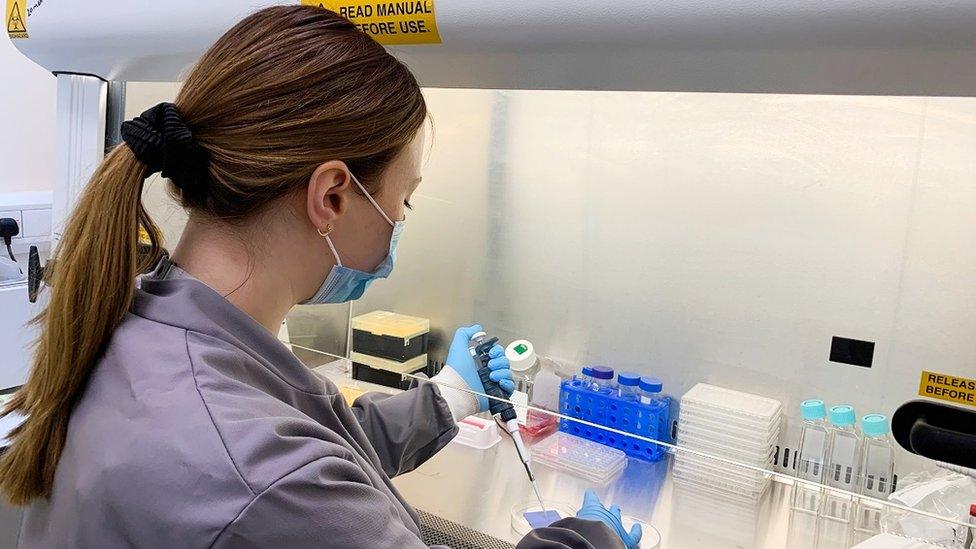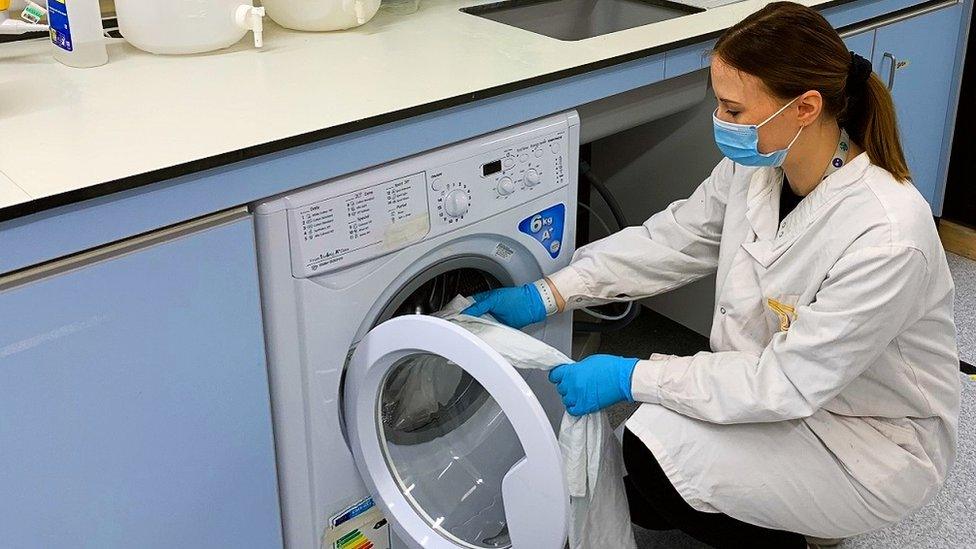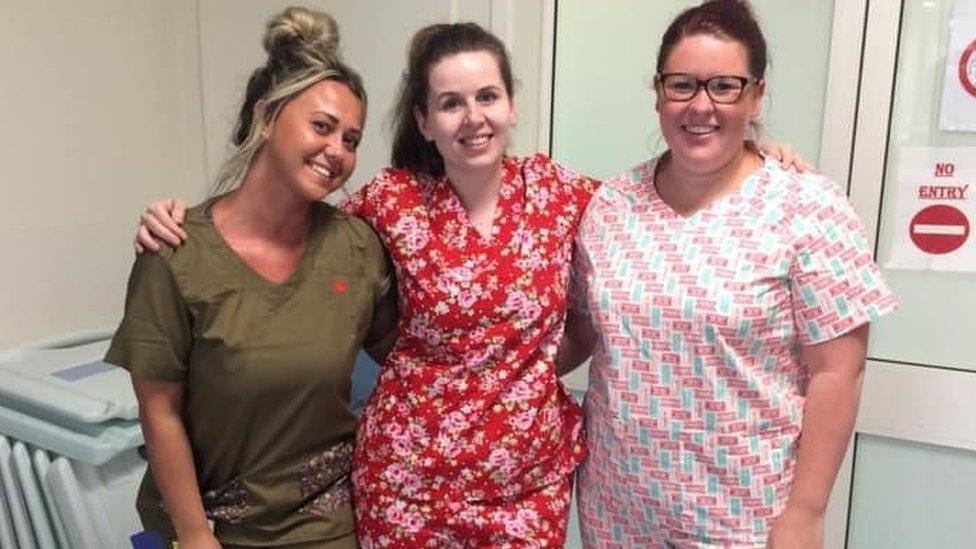University study finds Covid survives three days on fabric
- Published

Droplets of the virus were tested on fabrics commonly worn by health workers
Scientists have found viruses similar to the strain that causes Covid-19 can survive on commonly-worn fabrics for up to three days.
The study by De Montfort University in Leicester tested a model coronavirus on polyester, polycotton and 100% cotton.
The results suggested polyester posed the highest risk.
Microbiologist Dr Katie Laird, who led the study, said the materials, commonly used in healthcare uniforms, posed a transmission risk.
The study saw droplets of the virus added to the fabrics.
The scientists then monitored the stability of the virus on each material for 72 hours.
The results showed polyester posed the highest transmission risk, with the virus still present after three days and with the ability to transfer to other surfaces.
On 100% cotton, the virus lasted for 24 hours, while on polycotton, the virus only survived for six hours.
"When the pandemic first started, there was very little understanding of how long coronavirus could survive on textiles," said Dr Laird, who is head of the university's infectious disease research group at DMU.
"Our findings show three of the most commonly-used textiles in healthcare pose a risk for transmission of the virus.
"If nurses and healthcare workers take their uniforms home, they could be leaving traces of the virus on other surfaces."

The virus was completely eliminated on cotton fabric when washed with detergent at a high temperature
The study also looked at the most reliable wash method for removing the virus from 100% cotton fabric.
Water was enough to remove the virus in all of the washing machines tested when it was added in droplets but not when scientists soiled the fabric with an artificial saliva containing the virus.
In these cases, only when detergent was used and a temperature of 40°C or above was the virus completely eliminated.
Using temperature alone, 67°C was required to eliminate the virus.
The study found there was no risk of cross-contamination when clean items were washed with those that had traces of the virus on.
However, Dr Laird said guidance published at the start of the pandemic by Public Health England (PHE) and the NHS regarding uniform washing, external was based on "outdated literature".
PHE's guidance said where it was not possible for uniforms to be industrially laundered, staff should wash them at home, but Dr Laird advised against this.
She said: "This research has reinforced my recommendation that all healthcare uniforms should be washed on site at hospitals or at an industrial laundry.
"These wash methods are regulated and nurses and healthcare workers do not have to worry about potentially taking the virus home."
PHE said the guidance is from UK Infection Prevention and Control (IPC) and was developed with the NHS.
An NHS spokesperson said: "Guidance updated in April 2020 clearly tells staff that if contamination of a uniform occurs with blood or body fluids such as respiratory secretions potentially containing SARS-CoV-2, then the wearer should change clothing immediately and the clothes laundered in hospital facilities.
"In addition, all staff must wear the appropriate PPE in line with the current UK IPC COVID-19 guidance, so they can protect themselves, co-workers, patients and their uniform from contamination of infectious agents."
Dr Laird said textile and laundry associations around the world were using the study results in their guidance for healthcare laundering.
The full project and methodology has been submitted to a journal and is currently under peer review.

LOOK-UP TOOL: How many cases in your area?
YOUR QUESTIONS: We answer your queries
GLOBAL SPREAD: How many worldwide cases are there?
THE R NUMBER: What it means and why it matters
TEST AND TRACE: How does it work?


Follow BBC East Midlands on Facebook, external, Twitter, external, or Instagram, external. Send your story ideas to eastmidsnews@bbc.co.uk.
Related topics
- Published24 April 2020

- Published21 August 2020

- Published11 October 2020
